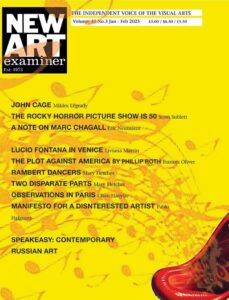By David Goldenberg
It seems that dragons, knights, the Crusaders, and St. George have always been iconographies that saturate our lives, through mass produced films, comics and animations. The St. George flag is often worn by football supporters and hooligans although they operate in a secular culture. Distinct iconographies of American film by Marvel and Disney and Japanese manga and film animation include dragon motifs forming a distinct but inclusive iconography. The Dragon joins together multiple histories, geographies and cultures condensed into one form. This synthesis, in the west, often takes place in the figure of St. George, providing the sense of unbroken historic and cultural continuity leading to an unending invention of new myths and forms and a search for new myths for the present day. The reappearance of the religious political iconography of the Dragon and St. George in recent times goes back to their source in popular culture, then forward to the present impact on today’s western Culture.
How do we explain why the Dragon and St. George secretly shifted centre stage in contemporary geopolitics and cultures, why this iconography has been little explored, and why the reason for their reappearance as both protest and rejection of cultural modernism and a world built after the 1st world war has been largely neglected. Why is today’s popular culture saturated with the worn-out iconography of St. George and the Dragon amid its apparent lack of sense in a secular culture?
Why should anyone spend their time looking at the iconography of western Dragons and St. George within the context of contemporary art when contemporary art in its Puritan secular version repressed mythology? Although it is evident that the contemporary did not bring to an end religion and illusion, humanism became the new religion of the age. In the visual arts, remembering that the Pre-Raphaelites’ tradition in the UK after the 1st World War led to a rejection of European modernism, we now see the revival of a mythological world and new myths for today.

We find in Wagner and Nietzsche an iconography that develops continuity, found in the use of the dragon and St. George, which embodies all of history, place and peoples going back into pre-history. The use of dragons and gold was an already overly familiar story, found in Wagner’s Ring cycle, from sources going back to eleventh century Germanic poetic cycles and Nordic myths, specifically the tale of Fafnir, a dwarf who kills his brothers for their gold and turns into a dragon to protect his treasure. Tolkien’s works, influenced by the iconography and story of St. George and the Dragon see a world the victorious powers declared as Modernism rejected when, in 1938 the Roman Catholic writer Tolkien published his now world-famous religious fairy story for children, The Hobbit. In The Hobbit, the dragon Smaug the Golden hunted maidens, recalling the dragon slain by St. George to protect Princess Sabra. After Smaug’s death in the Third Age in late 2491, the great dragons became extinct. However, according to Gandalf, the firedrake race survived until just after the War of the Ring and to a lesser extent survived even after that war. At the heart of Smaug’s and the Hobbit’s story is the quest for the dragon’s gold. The Christian overtones recalling St. George’s dragon are obvious as, with all religious stories, the hobbit’s fight against the dragon is reduced to a fight between good and evil.
Tolkien’s influences, from William Morris, Pre-Raphaelites, Beowulf, art movements reacting to the terrible costs of the Industrial Revolution and its wars are examined in The Hobbit. The Hobbit’s recipe and quest for the Dragon’s gold fits seamlessly into Disney World’s family friendly animations’ use of myth and mass popularisation and global distribution of art based on the familiar and recognisable.
The link between the dragon and the crusades becomes clear in the “Order of the Dragon” or “Dracula”, an order conferred by the Holy Roman Emperor, from the seat of the Holy Roman Empire in Nurnberg to aristocrats and kings in the Middle Ages, to declare a Crusade against its enemies, particularly the Ottoman Empire. The rise of St. George and the Dragon was spread by the crusades throughout Europe, through the popularisation of chivalric tales and the chivalric code in the stories of King Arthur and the Round Table, and the Christianisation of non-Christian beliefs and iconography. St. George is seen as a figure and iconography that continues the Roman Empire and the Christ figure with the dragon in film and popular culture formed in militaristic forms of Christianity including the Crusades. In contemporary popular art the dragon is seen alongside the knight crusaders, Batman, and Superman affirming and fighting for the true faith and beliefs through sacrifice to beliefs and ideas beyond this reality.

Herman Melville’s Moby Dick, the white whale or leviathan, the second coming, the Dragon, is misspelt Dagon, the Hebrew name for the Mesopotamian God who is the origin and father of all Mesopotamian Gods taking the notion of the Dragon into a completely new direction. Dagon resurfaces in H. P. Lovecraft’s story of 1917, Dagon, and The shadow over Innsmouth, in 1931, and a substantial body of work examining the dragon, beast, demon, devoid of a recognisable form, as morphogenesis or shape shifter, found in At the Mountain of Madness, 1931. The interesting point of Lovecraft’s fiction is that now the Dragon is purged of its religious intention and form, turning into an entity that is indescribable and beyond human comprehension, embodying the horror of the everyday.

This secularisation of mythology is taken to yet another level in Conan the Barbarian and Conan the Destroyer, with its use of dragons and militaristic codes, declaration of war on everyday life hidden behind an adolescent façade of pulp fantasy novels. Adopting Scandinavian mythology forms new worlds in opposition to western European modernism, use of paganism and the complete negation of western modernism’s order and culture put in place after the first world war. Here the narratives do not operate as rebellion and protest on the same level of counterculture and its use of absolute hedonism and celebration of this world that we find in Robert Crumb’s pornographic comics and drawings.

If these stories show a complete rejection of all aspects of this world, and the total destruction of this world, its historical order, civilization and history, what should we expect from reading these works? What does fiction, fantasy, mean in relationship to cinematic and virtual space? Each one of these stories has been translated into mass entertainment, mass popular global culture, mirrored in Disney’s secular religious family friendly films and culture, alongside Marvel and Dreamworld, as a receptacle for old and new mythologies.
Although troubling links exist between Tolkien and the context of the contemporary, at this difficult point in time for Western Art, in late 2023, Italy’s culture minister, Gennaro San Giuliano, organised the largest exhibition of Tolkien’s work, in the Museum of Modern and Contemporary Art in Rome, Italy’s most important art museum that normally shows Warhol and Picasso, in the first stop on a tour of Italy to popularise Tolkien there, and for people to engage Italians in the worlds and myths of Tolkien’s stories, So here we have a scheme to educate a Nation-State in the worlds and ideas of Tolkien’s fictions using art to counter competing ideologies.
.

